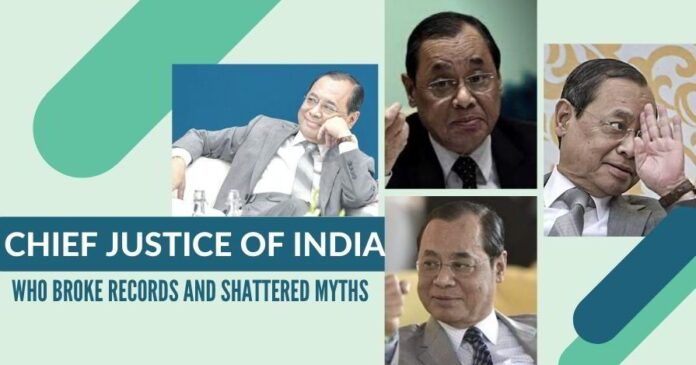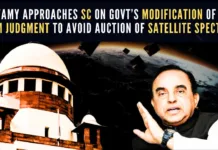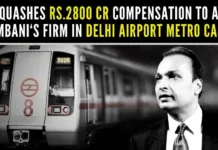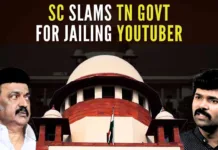
Ranjan Gogoi became a judge on merit and not due to his political connection. He rose up the ladder, again, on merit, eventually becoming the Chief Justice of India.
There was a sense of irony when outgoing Chief Justice of India Ranjan Gogoi refused to directly interact with the media on his last working day in office, saying that the “Bench requires judges to maintain silence while exercising their freedom” and that the outreach to the media should only be in an “extraordinary situation”. He was one of the four apex court judges who had addressed a Press conference on January 12, 2018, and spoke out against the then Chief Justice of India Dipak Misra’s administrative decision-making processes.
Perhaps in his view, Justice Misra’s conduct had created an “extraordinary situation” which warranted the unprecedented step of judges addressing the media. Whatever, the development had triggered an enormous amount of debate and given political contours to what was essentially a judicial issue. The anti-Modi lobby, which had somehow concluded that the then Chief Justice of India Misra had veered towards the government, welcomed the Press meet and saw in Justice Gogoi a mascot to contain the BJP-led government. On the other hand, certain other sections questioned the impartiality of Justice Gogoi, resurrecting his political background — his father had served as a Congress Chief Minister of Assam for a brief while back in 1982.
That he was willing, as Chief Justice of India, to think out of the box, is evident in the ruling of a five-judge Constitution Bench over which he presided, on the matter of whether the Chief Justice of India’s office came within the ambit of the Right to Information Act.
Both of these groups were wrong. Ranjan Gogoi became a judge on merit and not due to his political connection. He rose up the ladder, again, on merit, eventually becoming the Chief Justice of India. And, while he did participate in that Press conference against the then Chief Justice, he was neither a poster-boy for the government’s rivals nor did he show any undue favour to those in the courts — litigants or lawyers — that brought up cases against the government.
One of the four wise men
The fact that he had been part of a virtual rebellion against a serving Chief Justice of India did not, however, impact his rise to the highest post in the judiciary. Outgoing Chief Justice Misra, keeping aside the bitterness, recommended his name as his successor, given that Justice Gogoi was the senior-most judge. The government too, while possibly upset with the media outreach in which he was involved, did not waste time in confirming his appointment.
Gogoi’s elevation as Chief Justice gave hope to that particular lobby which had bared its fangs against Justice Misra — hope that he would be more amenable to them. That, they realised to their horror soon enough, was not to be the case. In fact, while hearing a variety of cases, the Chief Justice of India pulled up lawyers (who had been, on parochial grounds, celebrating his elevation) and asked them to behave.
In fact, while speaking after laying the foundation stone for an auditorium of the Gauhati High Court, he expressed concern over “belligerent and reckless behaviour” by some individuals and groups and hoped that the country’s legal system would manage such “wayward” elements. Though he did not name those groups and individuals, the backdrop to his remarks gave enough indications of their identities.
When he took over as Chief Justice of India in October 2018, there were several crucial cases before the court that needed closure. He would be involved in some of them, forming part of the Bench that heard those cases. In fact, in a matter of days, before his retirement, the Bench he participated in delivered four landmark judgements. A petition seeking a review of the court’s earlier order (which held that there had been no wrongdoing by the government) on the Rafale deal, was one of them. The Bench refused to entertain the review plea.
A balancing act
The second case which was before a Bench he headed, involved yet another review plea, seeking reconsideration of the court’s earlier order of allowing women of all groups to enter the temple of Lord Sabarimala. The Bench did a balancing act: It refused to stay the earlier order but it also ordered the creation of a larger, seven-judge Bench, to decide on the review and other larger matters related to faith. As Chief Justice, Gogoi demonstrated a willingness to appreciate the argument of religious tradition and not shut the door on those who believed in that line of thought.
That he was willing, as Chief Justice of India, to think out of the box, is evident in the ruling of a five-judge Constitution Bench over which he presided, on the matter of whether the Chief Justice of India’s office came within the ambit of the Right to Information Act. The Bench courageously held that indeed, the CJI’s office came under the RTI’s jurisdiction.
But it was the Ayodhya dispute verdict that the country had waited for with bated breath. A five-judge Bench, headed by Chief Justice Gogoi delivered a unanimous judgement, giving the rights to the disputed site to Ram Lalla Virajman, thus paving the way for the construction of a Ram temple at the site which had been a bone of contention for decades, after and before independence. But the order also directed the government to give five acres of land in Ayodhya to the Muslim side for the construction of a mosque. This came as a shock — yet another one — to the anti-temple and anti-Modi lobby. Nor surprisingly, Gogoi and his fellow judges on the Bench have come under attack from this lobby, which has termed the judgement as unjust and unfair.
Taking everything into consideration, how would one rate Gogoi’s performance as Chief Justice of India? Without a doubt, he proved himself to be fair and even. And also resolute. But for his determination, the Ayodhya case would have continued to drag on for years. Various attempts had been made by vested interests to prolong it but Chief Justice Gogoi put his foot down, ordered day-to-day hearing, set a deadline for the completion of arguments, and made it clear that the verdict would be out before he retired. He kept his word. On other issues too, that came too before him, he showed clarity and justness. If there is anything that led to questioning his image by certain quarters, it was the case of a former female employee of the court leveling charges of sexual harassment against him. While the issue got closure with an internal panel constituted to look into the allegation finding nothing substantial in the accusation, the manner in which the issue was handled came under the lens of some commentators. Nevertheless, it remains just a blip in Gogoi’s otherwise distinguished track record.
Note:
1. The views expressed here are those of the author and do not necessarily represent or reflect the views of PGurus.











[…] खबर को अंग्रेजी में यहाँ […]
But none if the Supreme Court judges did anything to speed up justice to a common man. Cases are languishing, even in Supreme Courts, for years. A justice delayed is, justice denied.
He will be remembered in the annals of history for his sagacity.
Ayodhya best but cbi dir , Rafale most controversial worse than khap Panchayat .He will be better known as Envelope Judge. !!!